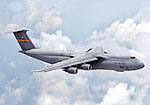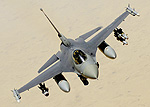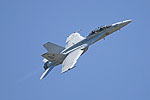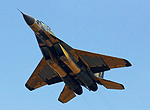Brazil Signs $1B+ Production MoU for Cougar Helicopters
In November 2007, “Brazil Embarking Upon F-X2 Fighter Program?” discussed both the revived fighter competition, and Brazil’s surprising 50% boost to its defense budget. Other programs mentioned in that article included Brazil’s selection of a medium transport helicopter and of an attack helicopter, with other programs to follow. After decades of neglect, Brazil is reconstituting both its armed forces, and a defense industry that once offered an array of competitive products on the global stage.
The medium transport helicopter competition featured 3 established players: AgustaWestland’s EH101 has found success in Britain, Europe, and Japan, and was chosen as the base for the USA’s VH-71 Presidential helicopter before that program was canceled. Eurocopter’s EC725 Cougar is an updated version of the popular AS332/532 Super Puma, and has been ordered in limited quantities by the French and Mexican governments. An up-to-date version of Russia’s widely used Mi-17 was the 3rd contender; like the Super Puma, Mi-8 and Mi-17 helicopters are already in wide use within Latin America.
In truth, however, Eurocopter always had an edge. The Brazilian Amy’s Aviacao do Exercito already uses the AS532/”HM-3” Super Puma, basing them in the Amazon at Manaus. Its Navy also uses Super Puma variants: AS332s and AS532s both serve in the Navy as the UH-14, flying from Brazil’s NAe Sao Paulo aircraft carrier and from the southeastern base of Sao Pedro da Aldeia in support of Brazil’s Marines. Now, Eurocopter’s offering will become Brazil’s medium-lift helicopter across all services… thanks to a new contract.
The Cougar and the Opportunity
The helicopters in question will be EC725s. While Eurocopter itself uses the Cougar designation primarily for its new EC725 and its EC225 civilian version, Helibras’ pages refer to the AS532 as “Cougar” in line with Aerospatiale marketing efforts since 1990. Compared to the AS532, the EC725 Cougar uses more advanced modular design of the mechanical assemblies, more composite materials, state of the art avionics, and prognostic monitoring systems for key components. Jobim’s reference to a “Super Cougar” helicopter, and reports that Eurocopter will invest $300-400 million in Helibras Minas Gerais plant as part of the deal, both pointed to the EC725 as the likely model under order. This was subsequently confirmed in an MDD release.
Brazil’s Navy and Army will each receive 16 helicopters to support their missions. The Air Force will receive 18; 16 for general tasks, and 2 configured as VIP transports.
Meanwhile, the deal itself offers important benefits to both parties. The Brazilians make some progress in the area of fleet standardization, though they will continue to operate helicopters from Bell and Sikorsky as well. They also strengthen a key defense industry relationship, and build national capability with the upgraded Helibras facility. There are rumors that Snecma’s Turbomeca will set up an “industrial facility” in Rio de Janeiro for helicopter engines. All of these moves will make a difference to Brazil’s long term costs. Local production of Cougar helicopters in Brazil also creates a local source for state firms like Petrobras, who may need long-range helicopters for their offshore oil rigs, and for “para-public” agencies like law enforcement et. al.
EADS Eurocopter gains as well. On the one hand, the deal doesn’t quite establish production in a dollar zone, which has been a goal of EADS leadership. Brazil’s Real has increased in value from about $0.35 in January 2004 to almost $0.65 in June 2008, and has even increased in value relative to the Euro, rising from EUR 0.28 to EUR 0.40 over that same period. With Brazil moving away from the US dollar as a reference currency in international trade, Brazilian production will have to compete on its own economic merits, rather than benefiting from currency externalities.
On the other hand, the global medium helicopter market is currently very tight, with demand outstripping supply. EH101 production is backlogged to the point that Britain moved to buy Denmark’s fleet, rather than wait for factory deliveries of extra machines for the front lines. NHI/Eurocopter’s smaller NH90 is in an even worse state, and is backlogged by years; so is Boeing’s heavy-lift CH-47F Chinook production line. Sikorsky’s medium-heavy CH-53K will not be a realistic option before 2016 or so. Its smaller H-92 Superhawk has yet to be delivered, has not been ordered in a military transport version, and currently has just one small military customer in Canada. This leaves Russia’s Mi-17, which has its own steady flow of demand and attracts questions about its Rosoboronexport’s support and negotiating approaches, or Eurocopter.
An additional production line and firm orders for the EC725 offer Eurocopter additional capacity to meet global demand, while fulfilling their existing commitments. It also offers them a key reference customer beyond France, giving their new model credibility as a viable long-term choice for existing Puma and Super Puma operators.
slds,
moises

















